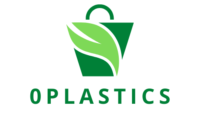Fungi and mycelium play a crucial role in creating sustainable packaging materials through a process known as “biopackaging.” This innovative approach leverages the unique properties of fungi to develop eco-friendly and biodegradable packaging solutions. Here’s how fungi and mycelium contribute to sustainable packaging:
1. Mycelium as a Raw Material:
- Mycelium, the root-like structure of fungi, can be grown on various agricultural waste materials, such as corn husks, sawdust, or rice hulls. This process converts low-value agricultural byproducts into a valuable resource for sustainable packaging.
2. Biodegradability:
- Mycelium-based packaging is biodegradable, meaning it can naturally break down into organic matter when discarded. This property helps reduce plastic pollution and environmental waste.
3. Lightweight and Strong:
- Mycelium-based materials are lightweight yet remarkably strong and durable, making them suitable for a wide range of packaging applications, including protective packaging, insulation, and even structural materials.
4. Customizability:
- Mycelium-based materials can be tailored to specific requirements. By adjusting growth conditions and molds, manufacturers can create packaging with different shapes, sizes, and densities to meet the needs of various industries.
5. Low Environmental Impact:
- The growth of mycelium for packaging materials consumes fewer resources and emits fewer greenhouse gases compared to the production of traditional plastic materials. It also minimizes the need for non-renewable resources.
6. Sustainable Sourcing:
- The cultivation of mycelium relies on agricultural waste products, which can be sourced sustainably and locally, reducing transportation-related carbon emissions.
7. Safe and Non-Toxic:
- Mycelium-based materials are safe for use in food and pharmaceutical packaging. They do not release harmful chemicals or toxins and are resistant to mold and bacteria.
8. Insulation Properties:
- Mycelium-based materials possess excellent insulation properties, making them suitable for packaging fragile items that require protection from temperature fluctuations and physical shocks.
9. Versatility:
- Mycelium-based packaging materials can be used in a variety of applications, including shipping materials, protective packaging for electronics, construction materials, and even fashion items.
10. Circular Economy:
- Mycelium-based packaging aligns with the principles of a circular economy. It can be easily composted at the end of its life cycle, returning valuable nutrients to the soil.
In summary, fungi and mycelium are at the forefront of sustainable packaging innovation. They offer a renewable, biodegradable, and versatile alternative to traditional plastic packaging materials. Mycelium-based packaging is gaining traction in industries seeking eco-friendly, high-performance solutions that minimize environmental impact and promote a more circular approach to packaging. As research and development in this field continue to advance, mycelium-based packaging is expected to play an increasingly significant role in reducing plastic waste and promoting sustainability.
